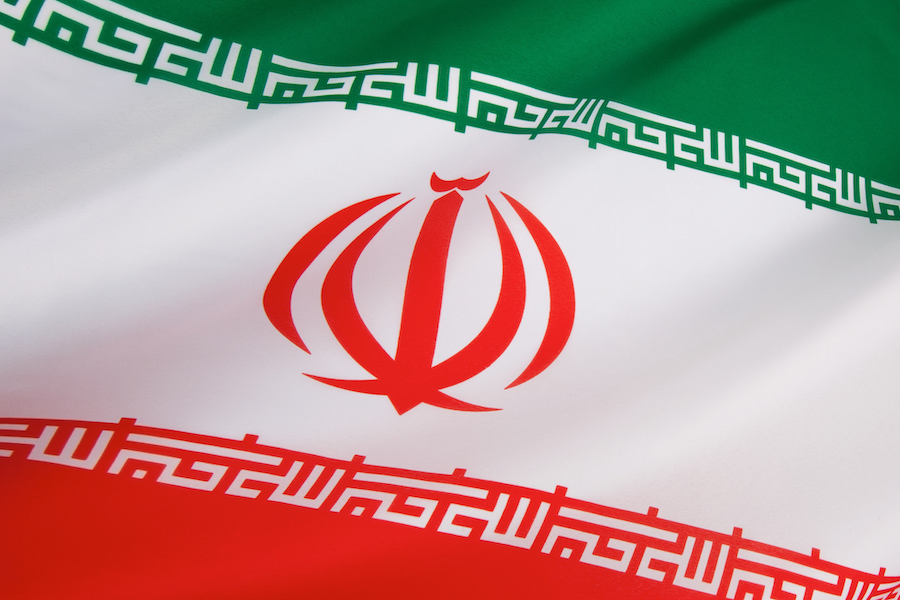Unemployment Rate Low, But More Workers Needed
More Canadian Employers Hiring Foreign Workers
Despite the unemployment rate in Canada dropping to pre-pandemic levels, employers continue to struggle with finding qualified employees.
A Statistics Canada report showed that, for every 100 vacancies, employers filled an average of 5.2 vacancies. In December 2021, there was an increase in vacancies at the same time as a decrease in Canada's unemployment rate, which fell to 5.4%.
To fill gaps in available labour, Canadian employers have turned to hiring thousands of foreign workers through more than 100 different work permit pathways. Currently, there are two major work permit programs - the Temporary Foreign Worker Program (TFW) and the International Mobility Program (IMP). The biggest difference between the two programs is the Labour Market Impact Assessment (LMIA) exemption.
What is the LMIA?
LMIA is a labour market test that employers must complete if they want to legally hire a foreign worker.
Since the TFW is made to address labour shortages in Canada, it does require employers to get an LMIA. On the other hand, the IMP supports the country's broad social, cultural, and economic objectives, which eliminates the need for tests connected to the labour market.
What Can You Expect When Applying for a Foreign Worker Program?
If an employer decides to hire you via the TFWP, they first have to prove that there is an absence of suitable workers already within the country, and that your employment won't have a negative impact on the Canadian labour market. Once the employer receives a positive or a neutral LMIA, they must give you a copy so you can submit it together with your work permit application to the IRCC. After your work permit application is approved, you can start your new job.
With the IMP, work permits are a result of Canada's free trade agreements. One of those is the International Experience Canada (IEC) Program which enables youth from around the world to work in Canada. International student graduates and eligible spouses and common-law partners can also apply for open work permits.
Workers with open work permits can accept any job offer in Canada, regardless of employer or occupation. Since all open work permits fall under the IMP, employers do not need an LMIA to hire these workers.
That said, employers who wish to hire through IMP must pay an employer compliance fee and submit an offer of employment form through IRCC's Employer Portal. This must be done before a foreign worker can apply for their work permit.
The Use of AI within the IRCC
The System in Place
The federal government’s lofty immigration goals, the COVID-19 pandemic creating a backlog of applications, and a large number of applications filed daily have pushed IRCC to modernize a previously paper-based system. Despite an increased use in decision-making technology, automation is not new.
Application Automation
Since 2015, most visa-exempt travellers were issued an Electronic Travel Authorization (eTA) through an automated system. Piggybacking off that success, in 2017 the IRCC conducted a pilot project that used AI to triage and approve low-risk temporary resident visas from China. These applications were sorted into two tiers: low-risk, which were auto-approved, and medium-to-high risk, which were reviewed by an officer.
Chinook
IRCC created an excel-based software named Chinook to help sort and bulk-process applications. When using this application, officers are assigned a set number of applications, which had data pre-extracted and organized onto a spreadsheet. Officers can then review multiple applications on a single screen, and flag anything concerning.
Since being introduced in 2018, there has been an increase in refusals from certain countries. For example, refusals for study permits from India increased by 23% between 2018 and 2020.
Beyond the increase in what Chinook would consider ‘undesirable applications’, critics have raised concern about its application. Many lawyers and applicants can not understand, let alone challenge, the reasons for some auto-rejections. This can be seen in the landmark Ocran case. Not only was Ms. Ocran’s case the first insight into the inner workings of the program, but her lawyer also argues that the rejection would not have occurred if an officer had handled her file.
What is the New System and How Will it Work?
With the IRCC searching for a way to streamline their system, in 2021 the Ministry of Immigration has pledged $428.9 million dollars over five years to replace their case-management system. Although it has yet to be named and the details have not been made public, the department’s digital policy team created a 56-page automation playbook outlining its developmental objectives.
The document suggests that the IRCC should allow the use of deep-learning algorithms, which can be unpredictable and work “outside the scope of meaningful scrutiny and accountability”. Though this technology is not meant to solely determine whose application will be accepted, facial recognition may be implemented.
Although the playbook states that the IRCC should be transparent with its use of AI, limited information should be shared to prevent applicants from taking advantage of the system. The option to opt out of automated processing should not be available either. However, to offset any discriminatory practices, the algorithm is expected to be tested against existing human rights laws.
While it may be comforting to know that the playbook suggests that humans should be included in the decision-making process, and be accountable for manually reviewing the cases, it seems like that principle is not practiced with the current system.
What Critics are Saying
Arghavan Gerami, Founder of Gerami Law PC, says she has a problem with introducing AI into the immigration system. “It’s not fair” she says, “an independent officer is not exercising discretion”. Petra Molnar, an expert in Canada’s approach to automation, feels similarly to Gerami.
Despite the potential to make the system more efficient, Molnar says we “missed the step where we’ve had a conversation as a society about whether or not we’re okay with automating certain aspects of a high-risk decision-making system like immigration”. Finding a balance between discretion and automation will be difficult.
University of Calgary Professor, Gideon Christian, also debated this topic in the House of Commons last month. Alongside the drop in approval ratings from Indian countries, there has also been a drop in student visa approvals from African countries. He fears that “racism and discrimination is evident from a human review of this application. If we train artificial intelligence technology using this data, we’re going to have a regurgitation of that same problem”.
Canada to Welcome Ukrainian Nationals
Different Immigration Streams to Open
Ukraine and Canada have a historic tie that dates back to the late-1800s. Since then, Ukrainians have consistently come to the country to resettle and currently make up more than 2% of the population. In light of the current conflict, the government of Canada has stepped up to help. Not only is IRCC prioritizing Ukrainian applications in all immigration streams, but in two weeks, it is also introducing new immigration pathways.
Canada-Ukraine Authorization for Emergency Travel
This stream is meant for individuals looking to obtain temporary residence and will eliminate most of the normal visa requirements. While there is no limit to the number of people who can apply, individuals must complete a background check and security screening. Once approved, the permit can be extended for up to 2 years.
Family Reunification Sponsorship
Working in conjunction with the Ukrainian Canadian Congress, this new stream will be open to Canadian citizens and Permanent Residents who have a spouse, common law or conjugal partner, or dependent children who are Ukrainian nationals. This pathway is intended to be another way to obtain permanent residence. As part of this program, IRCC will also fast-track the processing of travel documents for family members without a valid passport.
Open Work Permits
All Ukrainian nationals who come to Canada will be immediately eligible to apply for an open work permit. Likewise, Ukrainians currently in the country who cannot go home safely, and have a visitor, work, or student visa, will also be eligible for an open work permit. Individuals with job offers who have applied for a permit may immediately start working while their application is being processed.
Other Measures
The IRCC has created a dedicated service channel. All Ukrainians inside and outside Canada can speak with IRCC agents over the phone using the dedicated line 613-321-4243 or by adding the keyword Ukraine2022 to any of their web form enquiries.
The Immigration Minister has also implemented a vaccination exemption for Ukrainians who have a visitor visa, temporary resident permit, or written notice that permanent residence has been approved. The exemption applied to those who are unvaccinated, partially vaccinated, or have vaccines that are not formally recognized by Health Canada. However, all other public health measures, including quarantine, will apply.
CBSA is also cooperating by temporarily staying all removal orders of Ukrainian nationals.
Work Permits Among Five Priorities on IRCC's Budget
The Process Is Becoming Faster?
During meetings with the Standing Committee on Citizenship and Immigration, Minister Sean Fraser stated that the IRCC will use its $85-million dollar budget to reduce processing times caused by the pandemic. This statement follows his previous announcement that service standards for work permits, study permits, citizenship proof, and permanent residence card renewals will return to normal by the end of 2022.
Despite applications from most countries failing to meet the processing standard, a high number of work permits continue to be approved. In 2021, Canada issued around 420,000 temporary foreign worker visas under the International Mobility Program (IMP) and the Temporary Foreign Worker Program (TFWP). This is significantly higher than in 2019 when the total amount of visas distributed was 405,000.
Temporary Foreign Worker Program
This program enables employers to hire a foreign national to fill labour shortages in the country where there are no qualified Canadian workers available. The eligibility for this type of application depends on labour market needs for specific occupations and regions. Once approved, the work permits are employer-specific, meaning that foreign nationals are tied to one workplace and cannot switch between employers.
Outside Canada applications generally take 60 days to process, however, there are some exceptions. International Experience Canada work permits must be processed in 56 days, while work permit extensions can take up to 120 days.
International Mobility Program
This program is used to advance Canada's broad economic, social, and cultural national interests. It is largely based on bilateral agreements with other countries. Here, work permits can be both employer-specific or open, depending on the situation or agreement.
Why Are Faster Processing Times Important?
It is no secret that Canada's workforce is primarily supplemented by immigrants. According to the latest job vacancies report, last November the country had nearly 900,000 job openings. Due to the constant need for foreign talent, work permits for some industries have expedited process times. For example, the Global Talent Stream has a processing standard of 10 business days and is meant for employers in the tech sector to onboard foreign talent.
How to Stay in Canada if Your Work Visa is Expired?
If you apply for an extension of status before the expiration of your work permit, you can stay in Canada on maintained status until the IRCC makes a decision. During the waiting period, you are allowed to work under the same conditions prior to your visa’s expiry.
The maintained status could also apply to study permit holders and visitors wishing to extend their temporary status. Applicants for permanent residence may be able to get a Bridging Open Work Permit (BOWP) that allows them to stay in Canada until their application has been processed.
Why Do Iranian Immigrants Love Canada?
5 Reasons to Move
Canada continues to be an immigration hub and the eighth most popular country in the world for migrants. In 2021, the country resettled more than 400,000 new permanent residents, 11,000 of those being Iranian. CIC News reported on why Iranians prefer Canada over any other destination.
The Language
In Iran, English lessons start in middle school and continue through high school. Because of this, the majority of Iranians are fluent in English, making it easier for them to adapt and integrate quicker. Canada’s rich linguistic diversity offers another bonus - no matter where you come from, you will most likely hear your mother tongue on the street.
The Immigration Programs
Canada's diverse immigration programs are also tough to resist. Canada knows how important immigrants are for its economy, which is why the government consistently works hard towards landing a large number of immigrants each year.
Like most of the countries in the world, Canada has a declining birth rate and an ageing population, which had led to labour shortages that many experienced migrants are looking to fill. To do this, the government offers more than one hundred immigration routes. Historically, Iranians have entered Canada through Express Entry, PNP, family sponsorship, and student visa pathways.
Immigration Pathways for Students
Along with a high-quality education system, Canada also offers permanent residency pathways for international students. For example, if a student graduates from an eligible full-time program, they may obtain a Post-Graduation Work Permit. That allows them to gain Canadian experience and the potential to apply for other immigration programs.
The Quality of Life
In the 2022 World Population Review Report, Canada was ranked one of the best countries to live in. Not only does it have one of the largest economies in the world, but the OECD's Better Life Index also ranks Canada as above average in personal security, health status, environmental quality, job opportunities, earnings, and more.
Many Iranian migrants, like Karim Hakimi who is founded Hakim Optical Lab Ltd, and the Ghermezian family who developed and own the famous West Edmonton Mall, have found success after relocating to Canada. There are also current politicians with Persian roots; Ali Cyrus Ehsassi and Majid Jowhari are both Liberal Members of Parliament.
Multiculturalism
Since the 1970s, cultural diversity has been largely promoted in the country. Canadians are overall welcoming towards immigrants. Not only are Iranians a big part of Canada’s cultural community and economy, but many ancient ceremonies such as Nowruz and Persian New Year are also celebrated across the country.





